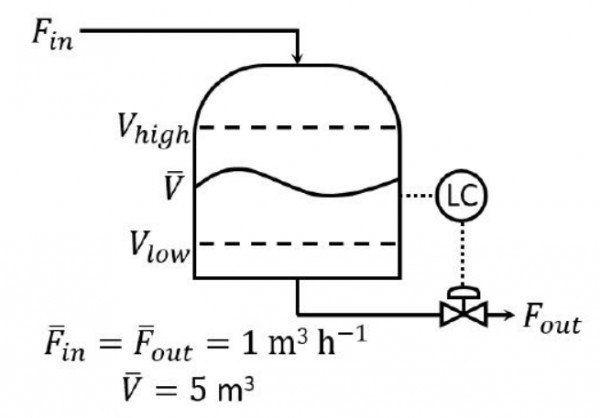Consider the surge drum in the figure. Initially the system is at steady-state with a hold-up $\bar{V}=5 \mathrm{~m}^{3}$, which is $50 \%$ of full tank capacity, $V_{f u l l}$, and volumetric flow rates $\bar{F}_{\text {in }}=\bar{F}_{\text {out }}=1 \mathrm{~m}^{3} \mathrm{~h}^{-1}$. The high hold-up alarm limit $V_{\text {high }}=0.8 V_{\text {full }}$ while the low hold-up alarm limit $V_{\text {low }}=0.2 V_{\text {full }}$. A proportional (P-only) controller manipulates the outflow to regulate the hold-up $V$ as $F_{\text {out }}=K_{c}(V-\bar{V})+\bar{F}_{\text {out }}$. At $t=0, F_{\text {in }}$ increases as a step from $1 \mathrm{~m}^{3} \mathrm{~h}^{-1}$ to $2 \mathrm{~m}^{3} \mathrm{~h}^{-1}$. Assume linear control valves and instantaneous valve dynamics. Let $K_{c}^{\min }$ be the minimum controller gain that ensures $V$ never exceeds $V_{\text {high }}$. The value of $K_{c}^{\min }$, in $h^{-1}$, rounded off to $2$ decimal places, is $\_\_\_\_\_\_\_\_$.
